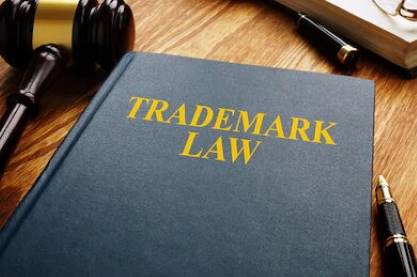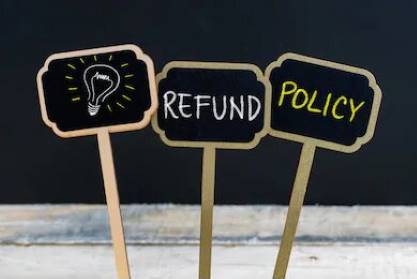
In the digital age, trademark infringement on Amazon is very common and also quite dangerous to the seller. So if you want to avoid trademark infringement cases when you sell on the platform, you have to really scrutinize the Amazon trademark infringement policy. Anyway, here are a few tips on how to deal with infringement.
How is Amazon Trademark Infringement determined?
Before anything else, you have to understand how Amazon spots infringement. Amazon follows the Lanham Act Section 1125(a) which states that sellers will be under civil liability if ever trademark infringement is found. In the case of Amazon marketplace, this rule applies when a third party seller uses the business names, assets or copyrighted products of another company or seller. Amazon infringement also happens when a seller uses the same logo as another seller (or even a similar one). This case would be known as logo infringement.
What happens when the infringement is detected?
Putting that into perspective, Amazon would usually take action when there is either a complaint from the original seller or a buyer (although they may already spot the infringement at the onset). From there, there will usually be a test of infringement. What is the test for trademark infringement? It would be known as the “likelihood of confusion” wherein a buyer will be tested for the confusion. If the buyer is clearly confused with the seller because he or she is very similar to another seller, then an infringement case might be on the horizon.
What are the factors of an infringement Amazon claim?
Now that we know the basic definition of infringement in Amazon, what constitutes trademark infringement? Well, according to trademark law, there are a few signs to watch out for under the likelihood of confusion test. Here they are:
• The similarity in the look of the plaintiff’s mark
• The similarity of their use
• The similarity in products among sellers
• The actual confusion stated by the buyers
• The reason the defendant states for using such assets/products
• The quality of the products of both parties involved
Take note that not all the factors need to be present during the evaluation of the case. However, when more of the factors are present, then the case will evidently become stronger.
What are the cases that Amazon considers a trademark claim?
The next thing to know regarding trademark claims would be the cases that are considered infringement cases in the eyes of the platform. In other words, you have to ask yourself what is a trademark violation of Amazon? Here are the situations that Amazon may consider for infringement Amazon claims:
» False reproduction of goods
First is if a seller is falsely reproducing the goods of another seller. Let’s say that you created a custom-made water tumbler with a unique appearance and so-so features. Out of nowhere, another seller buys your tumbler, takes out the logo, modifies the product a little bit, and sells it on Amazon again. It is clearly the same tumbler but with very slight modifications and with a different logo. In fact, they look pretty much the same! If this happens to you, you may report the case to Amazon immediately and file an infringement case.
» Use of name without authorization
Another situation that Amazon considers a trademark claim would be when a seller uses the brand name of another seller. Let’s say that you are selling Polaroid cameras under a brand name PolaroidGuys. Out of nowhere, some other seller uses the name PolaroidGuyz and pretty much sells the same things. Since the names are actually quite identical (with a one-letter difference), then it is actually a trademark infringement Amazon case. Obviously, this type of incident can be reported to Amazon, and action can be taken right away.
» Use of both name and product
Although this seems like a pretty dumb thing to do, there are sellers who sell the exact product of another seller AND use their name. These sellers would pretty much just create a knockoff of another seller and use that seller’s popularity to make some money. Going back to the example of PolaroidGuys, let’s say that these guys create custom Polaroid cameras. Suddenly, its knockoff PolaroidGuyz decides to buy cameras from PolaroidGuys and sell the exact same thing on Amazon. This is blatant copying and definitely has grounds for an infringement case, according to the definition of trademark infringement.
» Sales of copyrighted items
This one is quite a no-brainer as well. Let’s say that you’re an artist who creates paintings for a living. If ever there is a seller who sells your painting on Amazon without permission, then you may submit an infringement claim to Amazon to take the post down. Now, this violation does not apply in all cases.
One specific case would be if you publicly sell a book and a buyer re-sells the book on Amazon. Technically, the seller didn’t do anything wrong because your name is already cited in the book and the seller is just selling his old copy as a second-hand book. The rule would apply if you just published a book that hasn’t been released yet and a seller sells that book without permission on Amazon. However, once your book is publicly released, sellers may re-sell it on Amazon anytime they want.
» Use of Amazon pictures
This is actually a very common occurrence in Amazon among sellers. You see, there are a lot of Amazon sellers who create their own product pictures which they use to promote their products. There are also a lot of other sellers who “steal” these product pictures and use them for their own products. Technically, the owner of the original pictures has a copyright claim on those photos. If another seller uses the photos without permission, then the original owner can submit a copyright claim against the other seller.
» Use of product post text
Same with the pictures, the written text in a seller’s product post also has copyright protection. This means that if a seller copy-pastes the content of another product post for his or her own product, then he or she will be subjected to a claim of Amazon trademark infringement.
What happens when someone is sued for an infringement Amazon case?
What exactly will happen if any of the aforementioned situations do occur? Well, the plaintiff will first file a complaint about an infringement Amazon case for Amazon to review. Once Amazon reviews the case and does agree with the plaintiff, then there are usually three remedies for infringement or false advertising. These are:
» Payment of damages
The first solution would be the payment of damages. In order for the suing party to claim damages, he or she must first submit evidence that there were parties confused with the copying of assets or products. There must also be proof that the sued party tried to use the suing party’s trademarked assets for personal gain. In other words, there must be evidence that the use of third party trademark in advertising is in bad faith.
» Injunctive relief
Injunctive relief refers to a court order to do a certain action. The suing party may choose this remedy if they are able to show that the confusion leads to certain harm in the suing party’s business (such as a decline in sales or the start of a bad reputation). Of course, this has to be supplemented with the right evidence.
» Corrective advertising
The corrective advertising definition refers to undoing the harm caused by the sued party. Therefore, this may mean taking down the post or false advertisement that is involved in the claim or making a public announcement of such happenings.
How does Amazon handle false infringement cases?
While there are a lot of infringement cases that do actually hold water, there are quite a few infringement cases that are bogus and actually do not have any grounds. For instance, if a seller reports you for infringement and wants Amazon to take down your account, you have the chance to review the claim to see if you really did violate any trademark policies. If ever you see that you, in fact, did not violate any of the trademark rules, then you have the right to submit a counter-claim. This is a right under the Digital Millennium Copyright Act (DMCA).
According to this act, there are certain instructions on how to reply to a copyright infringement claim. If the sued party deems that the case is a false one, then he or she may respond with a counterclaim. If ever Amazon already took down the post involved, the counter-claim may state the reason as to why Amazon should reinstate the post. Once the counterclaim is already filed, then Amazon has 14 working days to bring the goods back up. In the 14 business days, they will be evaluating the counter-claim to see if it is valid. However, if the suing party decides to file a court lawsuit and submits the documentation to Amazon, Amazon will halt any action until the lawsuit is completed. For the sued parties who are making counterclaims, they will be subjected to the Federal District Court’s regulations with regard to false cases.
4 ways to avoid the account suspension because of the trademark claim
Counter-claims are usually filed when one’s goods are already taken down or when the Amazon account is already closed. As sellers though, you won’t want to get to that point. That said, you’ll most likely want to prevent your account from being affected after the infringement claim. If you believe that the claim is false and would want to prevent further action being taken against you, here are some things that you can do:
» Settle amicably
The easiest thing to do is to settle the case amicably. This means that you should contact the suing party directly and just work out a settlement that both of you can agree on. There is a possibility though, that the suing party won’t reply to you because they want to create a big deal out of the case. In that event, you may try the next few tips.
» Get a lawyer
The legal battlefield of Amazon’s ecosystem can be tricky for a non-specialist so it’s better to hire an Amazon IP infringement lawyer to help you out. A lawyer will make a professional legal letter and send it to the suing party.
» Send a copy of the legal letter to Amazon
The next thing to do is get your lawyer to send the legal letter to Amazon Notice team and wait for a response. If ever they do not respond, take note of it and use it in your later case.
Conclusion
If ever you sell private label things on Amazon, you must be very wary about infringement cases because Amazon is pretty strict with their copyright rules. That’s why it’s highly recommended that you read their policies before you even decide to become a seller on the platform.
Whether you are a brand owner or manufacturer who’s looking to protect their IP on the platform or a third-party seller accused of a violation, we can help you. Don’t waste time writing appeals that won’t work. We know how to talk so others listen.
We are here to help
drop a line!




